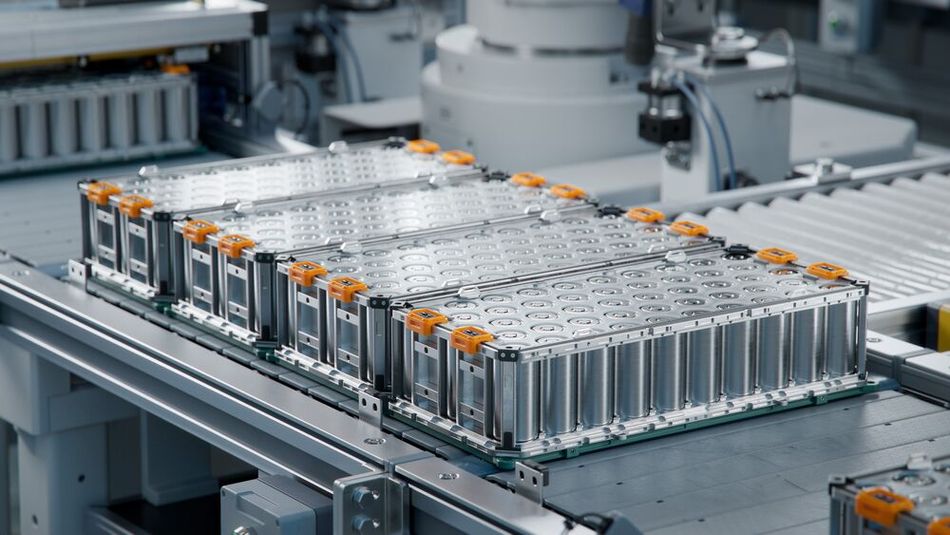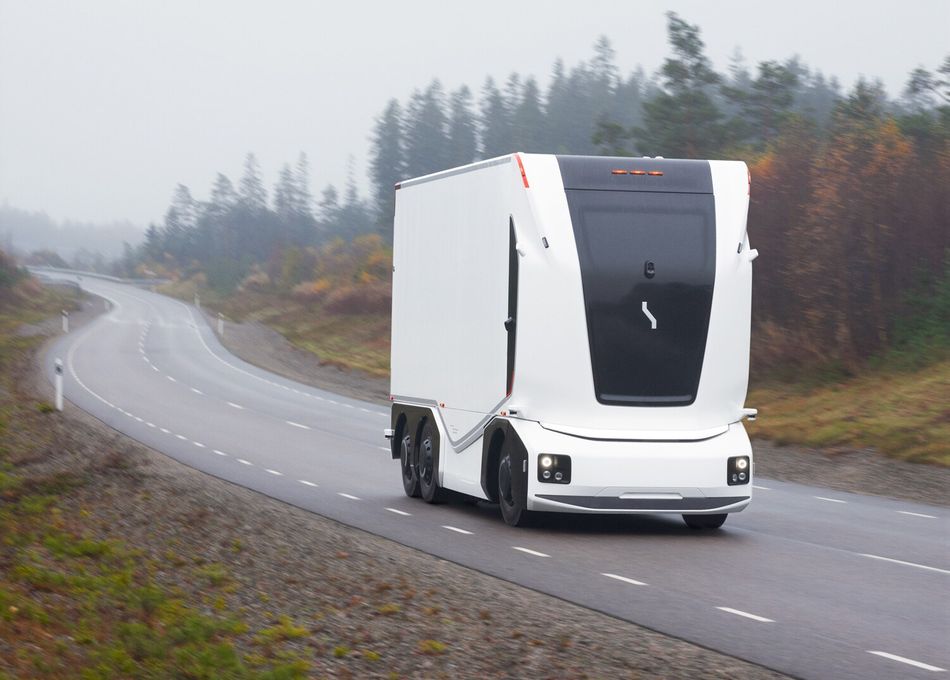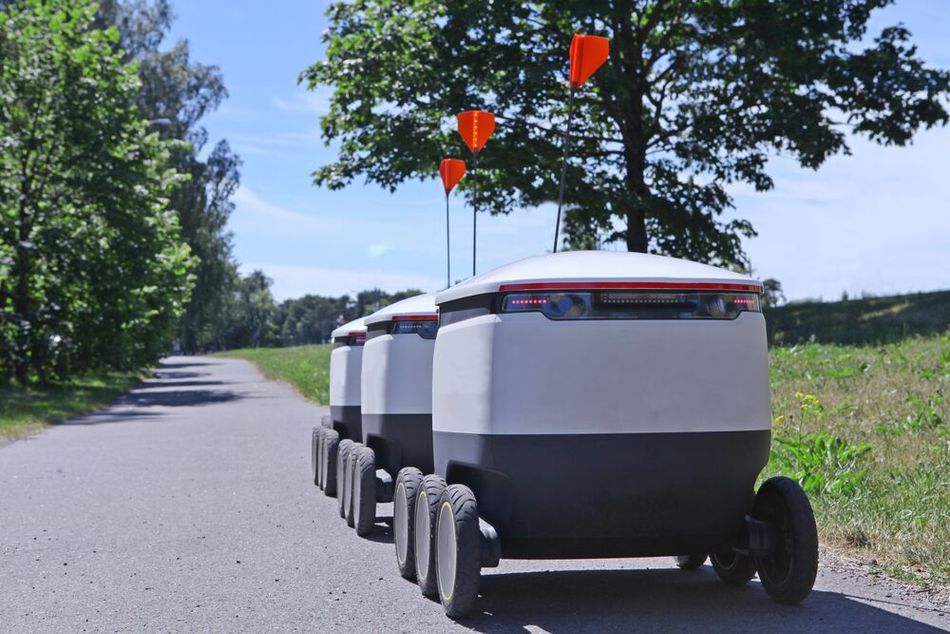Building the Truck of Tomorrow
The Challenges OEMs Face and the Technologies That Can Help Overcome Them

Image Source: Mike Mareen/stock.adobe.com
Despite making up less than 10 percent of on-road vehicles, large goods vehicles (LGVs) and heavy goods vehicles (HGVs) contribute a disproportionate amount of global greenhouse gas (GHG) emissions compared to fossil-fueled passenger cars, mostly due to their large diesel engines and high yearly mileage.[1] As such, governments worldwide are pushing for the rapid decarbonization of the transportation industry with the aim to eliminate fossil-fuel-powered truck sales by 2030 in much of the EU and 2035 in the UK, US, and parts of Asia.[2], [3], [4], [5] Yet, unlike the rapid deployment of new passenger electric vehicles (EVs), the commercial haulage and distribution sector has been slow to transition. This article explores the status of electrification in the commercial vehicle sector, looking at current roadblocks, potential solutions, and cutting-edge technologies, as well as considering alternative transportation modes for commercial deliveries.
Challenges for Commercial EV OEMs
Globally, passenger EV sales are rising. However, there is a big difference between this kind of success and adoption in the whole commercial vehicle industry. Goods vehicles with electric powertrains—which encompass battery, plug-in hybrid, and fuel cells—made up only 1.2 percent of worldwide truck sales in 2022.[6] Over the same period, the share of electric passenger car sales hit 14 percent.[7] Why does this disparity exist? There are several unique challenges facing commercial vehicle original equipment manufacturers (OEMs) in the EV industry.
Weight vs. Payload Considerations
Commercial vehicles, which can range from LGVs to HGVs, are designed to carry substantial loads. HGVs have a total weight of more than 3.5 tons, including the vehicle itself and its cargo. They come in various models, from articulated and flatbed trucks to tankers and emergency vehicles like fire engines. Transitioning to electric powertrains adds complexity due to the need to balance weight (including battery weight) with payload capacity. Part of this complexity includes optimizing the vehicle design to ensure sufficient range and payload capacity, especially if the cargo is refrigerated, which draws extra power.
Vehicle Cost
Commercial EVs often have higher initial costs compared to their internal combustion engine (ICE) counterparts, mainly due to the cost of the battery or hydrogen fuel cell. However, it is essential to consider the total cost of ownership (TCO), including factors such as running, maintenance costs, and government incentives. Commercial OEMs must educate fleet operators about the long-term benefits of EVs and work towards reducing upfront costs through economies of scale and technological advancements. Renault, for instance, predicts that their electric trucks will have an average energy cost per kilometer in Europe that is 40 percent lower than diesel trucks for city use.[8]
Infrastructure Constraints
Charging and hydrogen refueling infrastructure is critical for the widespread adoption of commercial EVs. Battery-electric vehicle (BEV) and plug-in hybrid electric vehicle (PHEV) trucks often have larger battery capacities but still require fast-charging capabilities to limit time off the road. Although there is massive investment in new installations, the current charging infrastructure may not be sufficient in terms of technical capabilities. According to the European Alternative Fuels Observatory (EAFO), there were over 550,000 public charging installations across Europe in 2023.[9] Even with ongoing investment, the European Automobile Manufacturers’ Association (ACEA) predicts that, by 2025, only 40,000 charging points will be suitable for medium- to heavy-duty trucks.[10] At a network scale, the availability of charging and hydrogen-refueling stations along major transportation routes is also limited. For instance, the ACEA estimates that by the 2030 electrification target, the number of charging points would have to grow to 270,000 to support the growing electric truck network.[11] Addressing these infrastructure shortcomings requires collaboration among commercial vehicle OEMs, governments, and infrastructure providers to upgrade charging stations and expand the networks.
Regulation Hurdles
Regulations play a crucial role in shaping the commercial EV market. While incentives such as subsidies and tax credits can encourage adoption, regulatory uncertainty or lack of sufficient incentives may hinder the transition to commercial EVs. Commercial OEMs need clear and consistent regulations that support EV adoption while addressing concerns such as emissions standards and vehicle safety.
Supply Chain Concerns
Transitioning to commercial EVs involves a significant overhaul of the manufacturing and servicing processes. OEMs need to secure a stable supply chain for critical components such as batteries (Figure 1), electric motors, and charging equipment. This may involve partnerships with suppliers, developing new manufacturing capabilities, and adequate training for service technicians to maintain and repair EVs. Supply chain disruptions, particularly in the context of global events or shortages of key materials, can pose additional challenges for commercial EV OEMs.

Solutions and Recommendations
As the transportation industry continues to evolve, developing the "Truck of Tomorrow" is a pivotal challenge. Among the significant barriers to achieving this goal, perhaps none is more pressing than the issue of range limitation. However, through a strategic combination of technological innovation, infrastructure development, and supply chain reinforcement, the industry can effectively address this obstacle.
Technological Solutions to Extend Range
Several technological advancements can be leveraged to enhance the range of next-generation trucks. Maximizing the use of battery packs and improving the efficiency of the drivetrain can significantly optimize energy consumption, as can increasing the energy density of battery packs through the adoption of solid-state batteries. By building on the technological innovations gained from small-scale batteries, a meaningful larger-scale version will be possible.
Additionally, higher-voltage battery architectures like 800V systems will enable faster charging capabilities. At these higher voltages, advanced silicon carbide (SiC) devices are needed to replace conventional silicon devices, reducing switching losses while accommodating the higher breakdown voltages. Hydrogen fuel cells also offer a promising avenue for extending range. Furthermore, implementing battery-swapping technology can provide a swift and convenient alternative to traditional charging, minimizing interruptions and optimizing operational efficiency.
Infrastructure Development Strategies
Robust infrastructure development is essential for supporting the widespread adoption of next-generation trucks. This includes the establishment of faster charging stations along major trucking routes and the integration of stations that support battery swapping. Moreover, the deployment of hydrogen- and renewable-powered truck stops equipped with localized power generation capabilities is crucial for enabling charging in remote areas and off-grid locations. By investing in these infrastructure initiatives, stakeholders can effectively address range limitations and facilitate the seamless operation of commercial EVs.
Reinforcing the Supply Chain
A resilient supply chain is fundamental to the successful development and deployment of the next-generation trucks. This entails adapting supply chains to accommodate the procurement and distribution of advanced trucking technologies, such as advanced battery systems and hydrogen fuel cells. Additionally, fostering industry collaboration and partnerships can mitigate challenges within the supply and service sector, ultimately supporting the widespread adoption of innovative trucking technologies.
Further Evolution
The focus on electrifying commercial vehicles mirrors that of the passenger vehicle sector. However, advancements in intelligent automotive sensing and control systems open broader possibilities for revolutionizing global haulage and distribution.
Autonomous Trucks
Swedish company Einride specializes in electric-powered autonomous trucks (Figure 2). These trucks can be controlled completely autonomously over long distances. However, when the vehicle enters a more complicated area, such as a loading bay or busy urban environment, drivers can take control of the vehicle remotely.

This autonomous but human-supervised technology lowers TCO, making up for the EV truck’s higher initial cost. When compared to a freight operation that relies on diesel, Einride’s technology, which has been in use since 2019, provides for an average reduction of 95 percent in GHG emissions.[12]
Last-Mile Deliveries
For people fortunate enough to work from home, rarely a day goes by that they don’t see or hear a van or LGV pass by the front door to deliver online purchases. With this shift in routine home and business deliveries, there are new alternative forms of transportation that can revolutionize these last-mile deliveries, especially in dense, urban environments.
Autonomous Delivery Robots
One alternative is the autonomous delivery robot (Figure 3), such as Starship’s platform,[13] which has now accomplished over five million deliveries. These compact robots use twelve onboard camera modules and GNSS tracking to move through urban surroundings at a pace of 6.5km/h.

Unlike other delivery options, these types of autonomous delivery robots can travel along footpaths because of their low-speed electric drivetrain. This makes it possible for them to travel more straight lines, making up for their slower speed.
Drone Deliveries
In the US, Walmart uses delivery drones in a bid to increase efficiency, reduce costs, and cut emissions.[14] Using drones from on-demand delivery providers Wing and Zipline, Walmart gives customers a rapid delivery alternative. Because they operate in the air, these drones can take faster, more direct routes than conventional delivery vans can, and they do not get stuck in traffic jams.
Conclusion
The transition to electric haulage and delivery vehicles marks a turning point in sustainability and innovation in the ever-changing global commercial transportation scene. While the lessons learned from the development and deployment of passenger EVs can provide valuable insights, the unique features of commercial trucks frequently necessitate a new viewpoint in addition to the most recent advancements, supported by industry-wide collaboration, to ensure success.
Sources
[1]https://assets.publishing.service.gov.uk/government/uploads/system/uploads/attachment_data/file/984685/transport-and-environment-statistics-2021.pdf
[2]https://www.europarl.europa.eu/topics/en/article/20180920STO14027/reducing-car-emissions-new-co2-targets-for-cars-and-vans-explained
[3]https://www.bbc.com/news/uk-66871073
[4]https://www.whitehouse.gov/briefing-room/presidential-actions/2021/12/08/executive-order-on-catalyzing-clean-energy-industries-and-jobs-through-federal-sustainability/
[5]https://seads.adb.org/solutions/asean-gears-shift-electric-vehicles
[6]https://www.iea.org/reports/global-ev-outlook-2023/trends-in-electric-heavy-duty-vehicles
[7]https://www.iea.org/energy-system/transport/electric-vehicles
[8]https://www.renault-trucks.co.uk/static/cost-of-electric-trucks-is-electromobility-expensive
[9]https://alternative-fuels-observatory.ec.europa.eu/general-information/news/significant-milestone-reached-european-union-boasts-half-million-public
[10]https://www.acea.auto/figure/interactive-map-truck-charging-points-needed-in-europe-by-2025-and-2030-per-country/
[11]https://www.acea.auto/figure/interactive-map-truck-charging-points-needed-in-europe-by-2025-and-2030-per-country/
[12]https://einride.tech/
[13]https://www.starship.xyz/
[14]https://corporate.walmart.com/news/2024/01/09/sky-high-ambitions-walmart-to-make-largest-drone-delivery-expansion-of-any-us-retailer
